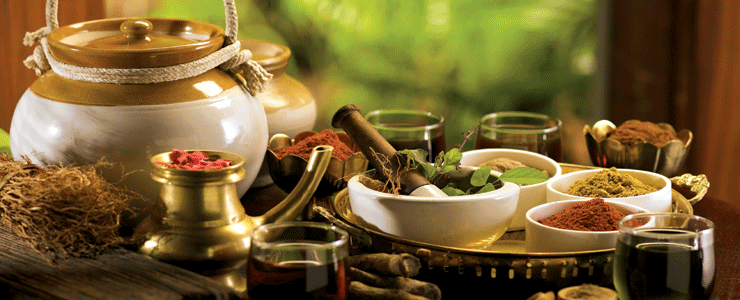More than a medical system, Ayurveda is a way of life, a way of cooperating with Nature and living in harmony with nature.
Health in Ayurveda means harmony, and there is really no end to the degree of harmony can achieve if you set yourself to the task. This method of living emphasizes prevention over cure.
Plant-based treatments in Ayurveda may be derived from roots, leaves, fruits, bark, or seeds.
In the 19th century, William Dymock and co-authors summarized hundreds of plant-derived medicines along with the uses, microscopic structure, chemical composition, toxicology, prevalent myths and stories, and relation to commerce in British India. Animal products used in Ayurveda include milk, bones, and gallstones.
In addition, fats are prescribed both for consumption and for external use. Consumption of minerals, including sulphur, arsenic, lead, copper sulfate and gold, are also prescribed.
The addition of minerals to herbal medicine is called rasa shastra.Ayurveda uses alcoholic beverages called Madya, which are said to adjust the doshas by increasing Pitta and reducing Vatta and Kapha. Madya are classified by the raw material and fermentation process, and the categories include: sugar-based, fruit-based, cereal-based, cereal-based with herbs, fermentated with vinegar, and tonic wines. The intended outcomes can include causing purgation, improving digestion or taste, creating dryness, or loosening joints. Ayurvedic texts describe Madya as non-viscid and fast-acting, and say that it enters and cleans minute pores in the body.
Purified opium is used in eight Ayurvedic preparations and is said to balance the Vata and Kapha doshas and increase the Pitta dosha.
It is prescribed for diarrhea and dysentery, for increasing the sexual and muscular ability, and for affecting the brain.
The sedative and pain-relieving properties of opium are not considered in Ayurveda.
The use of opium is not found in the ancient Ayurvedic texts, and is first mentioned in the Sarngadhara Samhita (1300-1400 CE), a book on pharmacy used in Rajasthan in Western India, as an ingredient of an aphrodisiac to delay male ejaculation.
It is possible that that opium was brought to India along with or before the Mohammedan conquest.
The book Yoga Ratnakara (1700-1800 CE, unknown author), which is popular in Maharashtra, uses opium in a herbo-mineral composition prescribed for diarrhea. In the Bhaisajya Ratnavali, opium and camphor are used for acute gastro-enteritis. In this drug, the respiratory depressant action of opium is counteracted by the respiratory stimulant property of Camphor. Later books have included the narcotic property for use as analgesic pain reliever.
| Dr. ROSHINA ANILKUMAR, BAMS |
Monday - Saturday |
9.00AM - 6.00PM |


